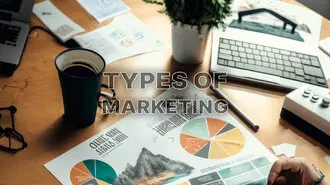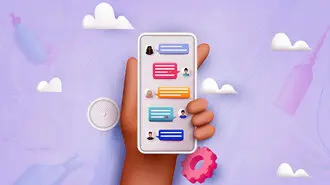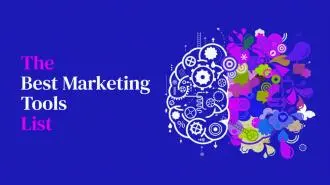There are many ways of conducting marketing campaigns, like digital marketing, PPC, and more. However, end-to-end marketing is one of the most comprehensive ways to execute an end-to-end strategy.
End-to-end marketing is a fantastic way to boost sales, connect with your target audience, and draw more visitors to your website. However, if you’re just diving into it, there are a few things you should get familiar with before launching any marketing campaigns.
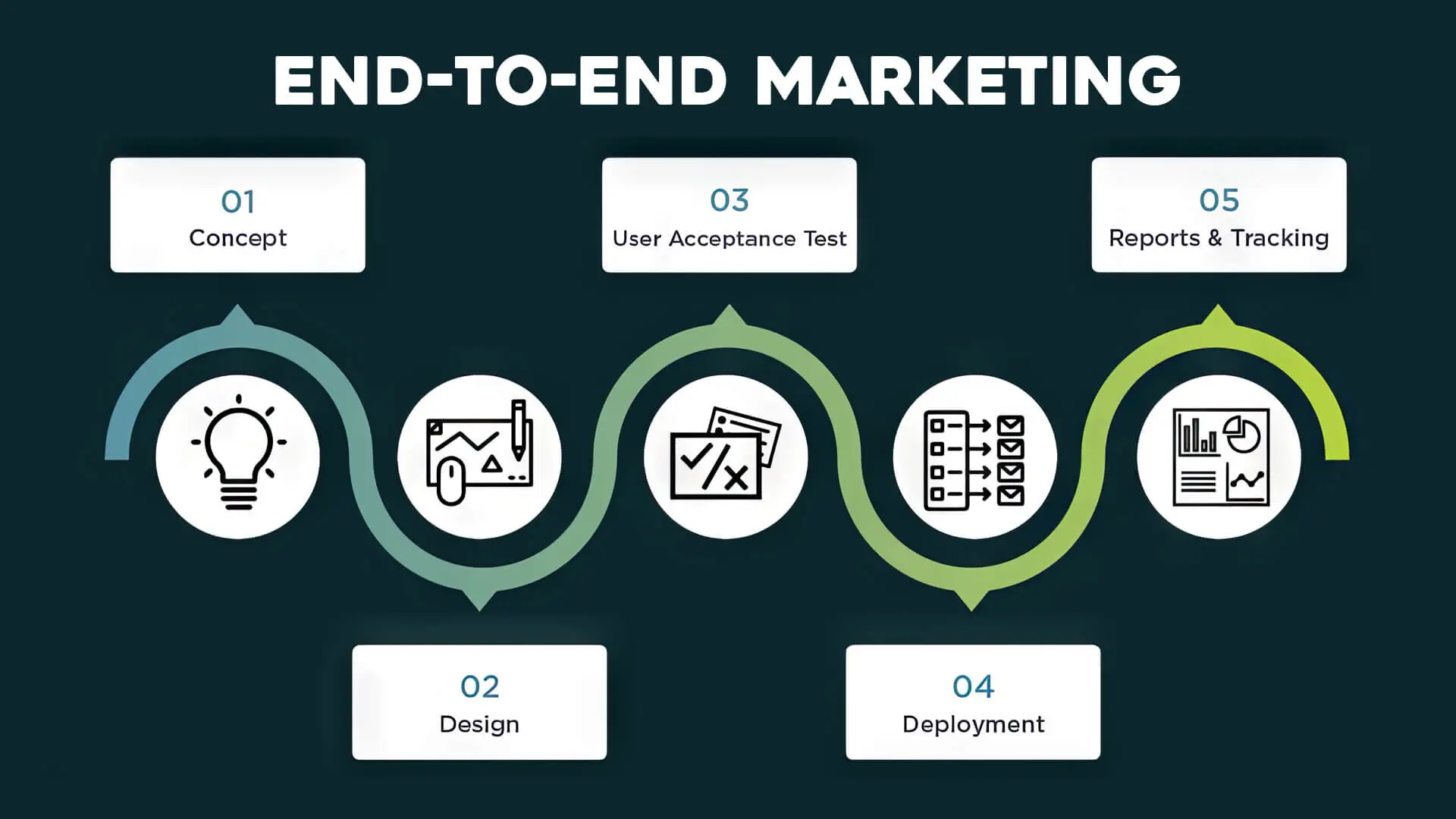
You should reference an editorial calendar to clarify doubts like, “What is end-to-end marketing?”, “What are some of the benefits of end-to-end marketing?” and “How is it different from other marketing strategies?”
We’ve covered all those questions and more, right here in this article, to make things simpler for you.
What Is End-to-end Marketing?
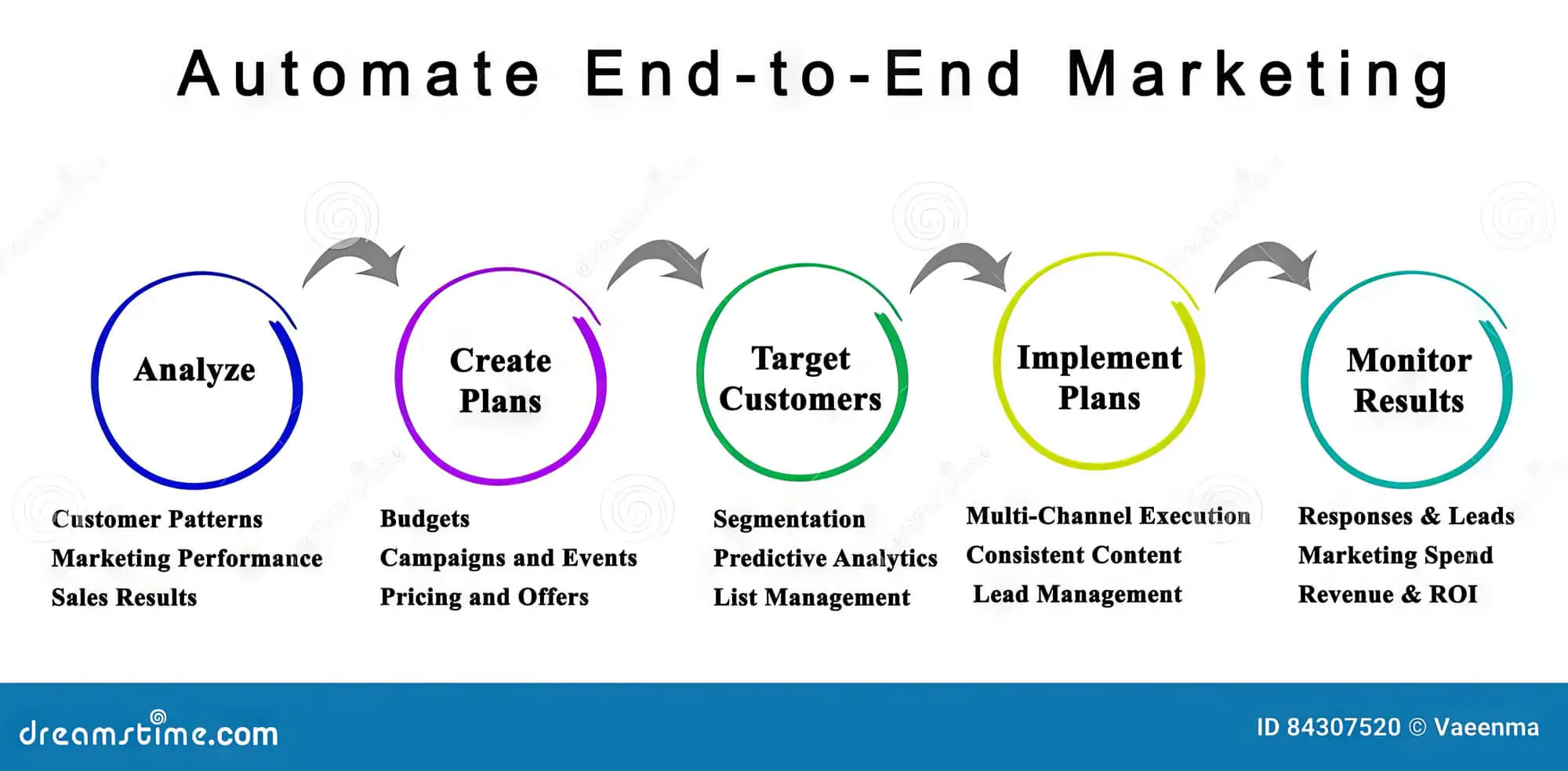
To make it as simple as possible, end-to-end marketing is the comprehensive strategy for end-to-end campaign management, engaging the target audience and generating leads effectively. It includes combinations of initial marketing strategies to lead generation, customer retention, and sales conversion.
Some of the main benefits of end-to-end marketing over other digital marketing techniques are:
- End-to-end marketing offers you a thorough understanding of the target audience and what they want.
- A thorough understanding is achieved by monitoring customer behaviour through various channels like social media and email newsletters.
- Through data gathered from Google Analytics, there is also the option of personalised campaigns based on individual needs instead of a common campaign that gets lost on the web.
All these features, strengthened by a solid strategy involving efforts to create content and relevant case studies, make end-to-end marketing a more effective marketing approach.
End-to-End Marketing vs. Traditional Marketing Approach
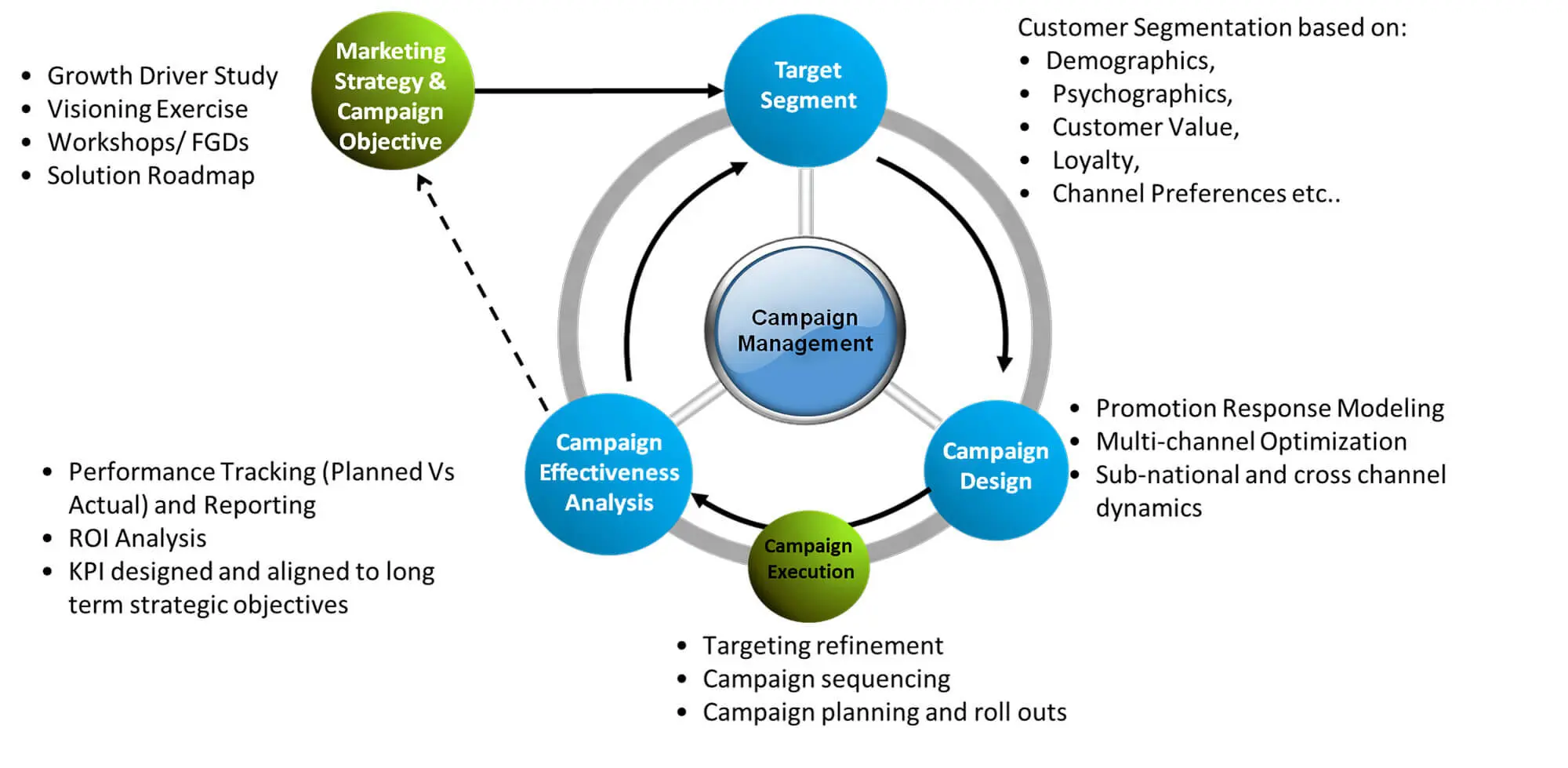
The traditional marketing approach believed that the target audience’s demographic determined decision-making. However, recently, it has been proven that it is not demographics but rather customer behaviour that helps in decision-making. Therefore, end-to-end marketing draws upon comprehensive data on the target audience and crafts personalised campaigns that boost brand recognition.
These personalised campaigns help keep customer satisfaction high because they show content that genuinely interests them, avoiding random, irrelevant ads.
Understanding End-to-End Marketing In Detail
Some more details about end-to-end marketing need explaining. These are some ways an end-to-end marketing strategy will optimise your business sales.
1. Drive
There is a new method used in end-to-end marketing called drive-capture-convert-optimise. The drive helps bring the target audience to your website and other social properties. The drive component utilises tools such as search engine marketing, organic SEO, paid search, and marketing analytics to gain a more comprehensive understanding.
Furthermore, it also leverages online channels, including social media posts, videos, banners, product listings, and email campaigns. It also uses social media with profiles and content channels, primarily through insightful blog posts and popular videos. Lastly, it encompasses content production across offline platforms like television, direct mail, print, and radio.
2. Capture
The second component of end-to-end marketing is capture. With this component, you can capture data and encourage the desired behaviour of customers. Some of the tactics used in capturing are;
- Designing a website and other microsites that engage and resonate with the audience makes it easy to navigate at every stage.
- Adding offers in landing pages to entice potential buyers.
- Employing a direct call campaign to engage and nurture prospective buyers.
- Organising webinars and trade shows to offer in-depth engagement for potential buyers.
Combining these tactics with a solid content strategy and innovative content ideas helps capture the target audience and retain potential customers.
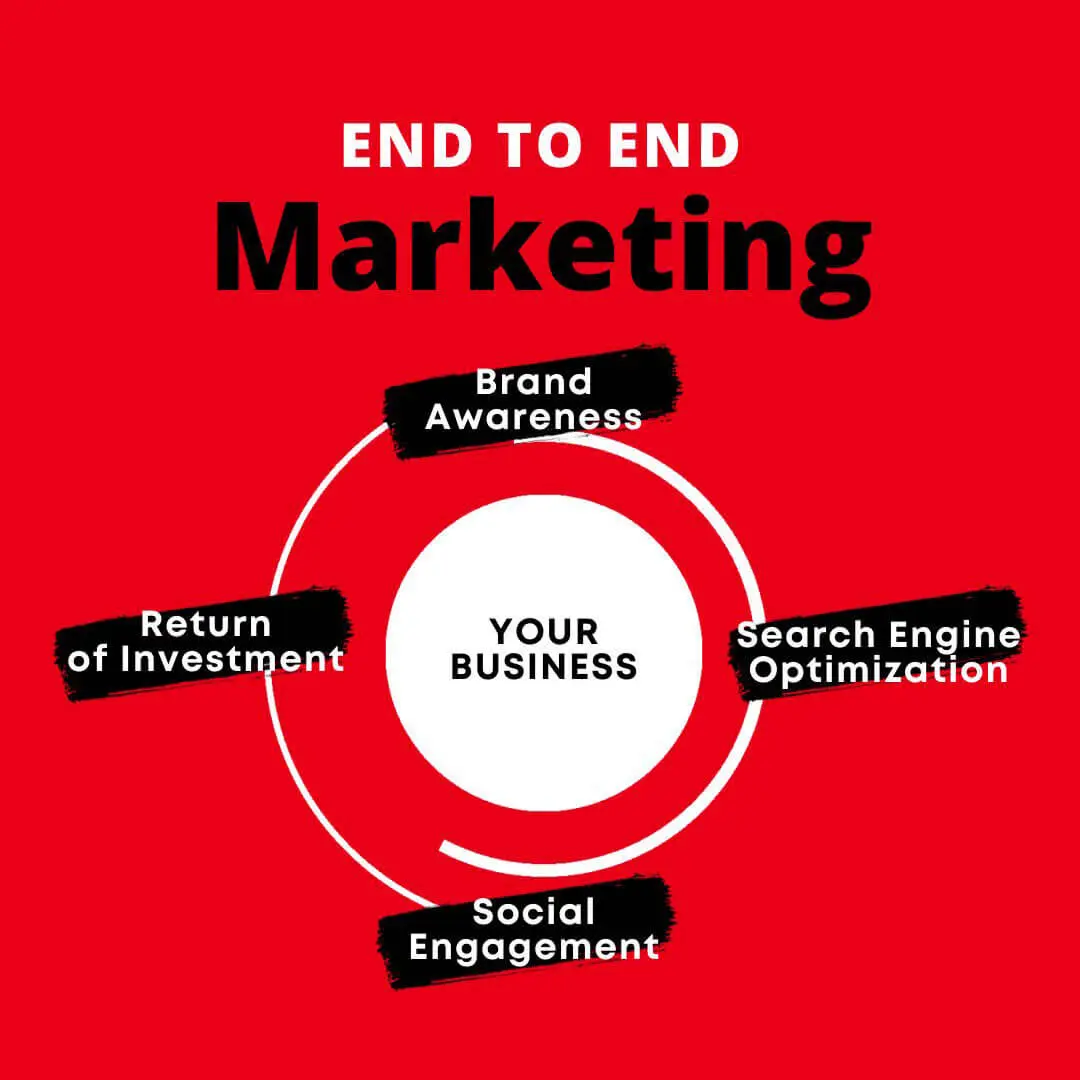
3. Convert
converting, essential to align with the sales team, is the third component of the end-to-end marketing strategy. It is through this component that you can increase your lead to sales. You can design personalised campaigns to grab potential buyers based on your internal database, CRM system, and cookie database. Some common tactics to convert can be:
- Email and automated nurture campaigns can keep your messages and offers visible to the target audience.
- You are engaging in paid campaigns and remarketing to keep your offers visible to potential buyers on the web.
- It uses strategies to create engaging content that maintains audience interest.
- Offline tactics like direct mail can be used to reach your audience.
- You are making personal contact with customers through telemarketing strategies like direct calls.
These tactics will help convert all your information on your customer and increase your ROI. So, this component of end-to-end marketing is an essential part of marketing strategy.
4. Optimise
The final piece of the end-to-end marketing puzzle is using real-time data to fine-tune channel and campaign performance. By leveraging critical KPIs, you can keep a close eye on how your marketing strategies are performing.
Based on this information, you can introduce new ideas for what works and what needs to be changed or altered. This information is crucial for your business because, with it, you may reduce expenditure on unsuccessful end content marketing campaigns.
FAQs
1. How Can A Business Implement End-to-End Marketing?
Once you decide to implement end-to-end marketing for your business, you should know some ways to do it. To do that, you can follow these instructions:
- First, clarify your business goals and the outcomes you want to achieve, as a comprehensive strategy will be devised only with such knowledge.
- You should also set clear marketing objectives, including the target audience you want to reach, as the platform, schedule, and campaign type will depend on it.
- Furthermore, you will have to make a budget for ad spend based on the capacity of the business and the revenue you want to generate.
- Suppose you lack tools like a content management system or in-house digital marketing expertise. In that case, you can hire agencies to help you with end-to-end marketing, as they have experience, tools, and other resources to decrease your workload.
- Carefully select an agency to implement your end-to-end marketing plan, asking for information on resources, charges, and methods used.
Armed with all this information, you’re set to plan and execute a captivating start-to-finish marketing campaign.
2. What Are Some End-to-End Marketing Tactics?
Some of the key methods used for end-to-end marketing strategy are:
- Knowing the customer’s journey and experience, as it is, will determine the campaign type and strategy across multiple channels.
- Employing various content strategies and diverse content formats such as video, banners, and social media content will aid in increasing website visitors.
- It captures the audience with websites that are easy to use and resonate with the customer experience.
- Converting these visits increases your lead and ROI by keeping customers engaged with effective content creation and continuously visible offers.
- You are optimising the information by measuring your KPIs against the data collected and making changes accordingly.
3. What Are The Benefits Of End-to-End Marketing?
There are multiple marketing benefits to this approach, and some of them are;
- It employs a comprehensive end-to-end brand strategy encompassing initial marketing, lead generation, customer retention, and sales conversion.
- Compared to a traditional approach, an end-to-end marketing strategy utilises audience behaviour to predict decisions and is more effective.
- It captures audience behaviour patterns and plans personalised campaigns for each individual need, keeping the customer engaged.
- It helps optimise your lead and ROI with a better marketing strategy using all the information gathered by the KPIs.
All these benefits of an end-to-end marketing plan make it more desirable for any business to generate revenue and an audience.
4. How Does End-to-End Marketing Differ From Traditional Marketing?
The difference between end-to-end marketing and traditional marketing is that the former is more comprehensive. This is because it utilises information on customer behaviour and engages them with personalised campaigns. Furthermore, a traditional marketing strategy cannot gather and maintain vast data, while end-to-end marketing can.
Also, end-to-end marketing uses tools like KPIs to measure the success of a campaign so that you can make different strategies for better results. All these components of end-to-end marketing make it more effective with long-term results. Therefore, if there is the option to choose between end-to-end marketing and traditional marketing, one should go with the former plan.
The Value of End-to-End Marketing

As we conclude, it’s vital to recognise tactics that increase engagement as key components. End-to-end marketing involves knowing your customer experience and needs. A strategy focused on creating content specifically tailored to engage and maintain target audience interest is ideal. Moreover, it is the most effective way of optimising leads and ROI using multiple tools like social media platforms, offline calls, KPIs, etc.
As you learn the workings of an end-to-end marketing plan, you can see if it is appropriate for your business. Accordingly, take the necessary steps in implementing an end-to-end marketing campaign. You should hire an agency if you need to learn how to design an end-to-end marketing campaign.
So, take a good look at the instructions above and consider investing in a solid end-to-end marketing strategy to boost your revenue.

